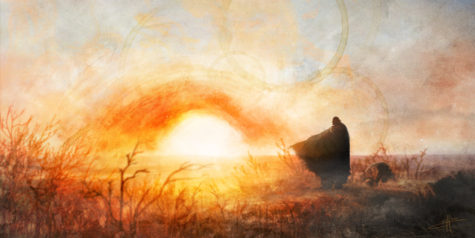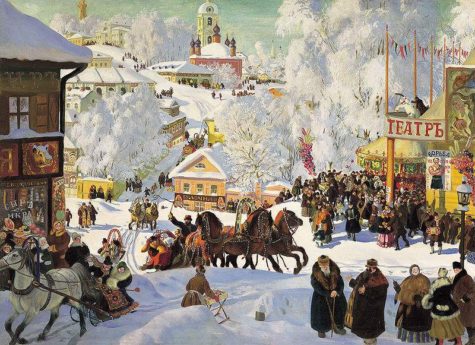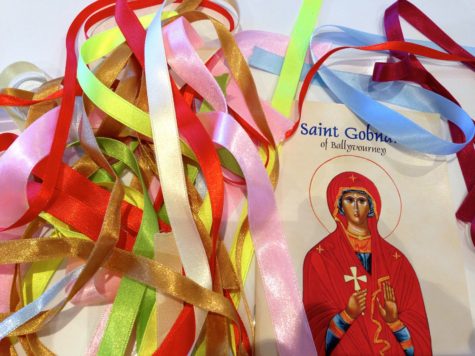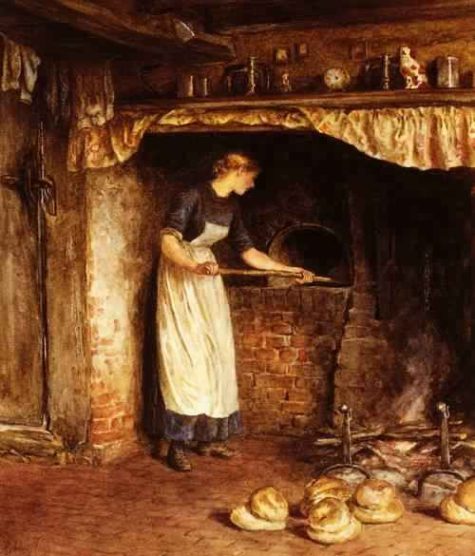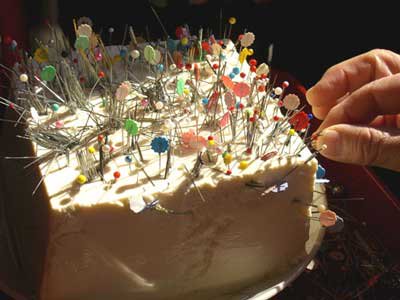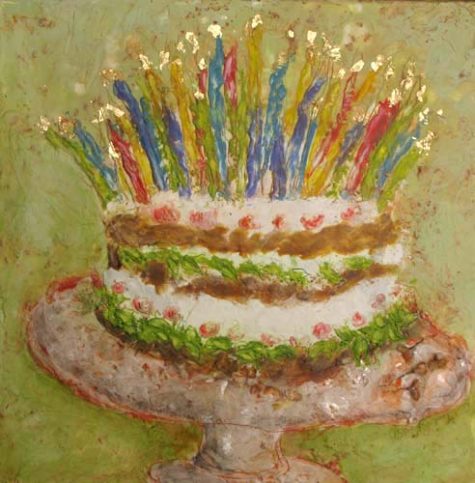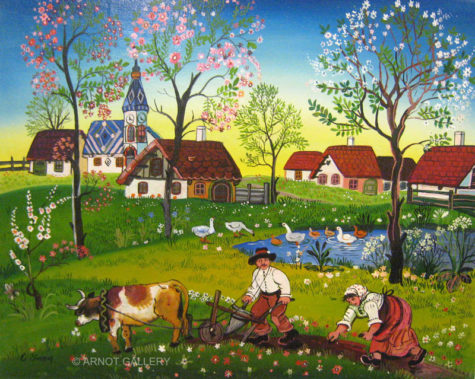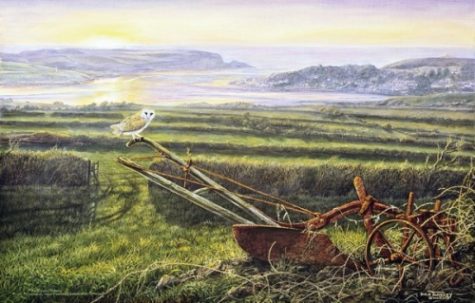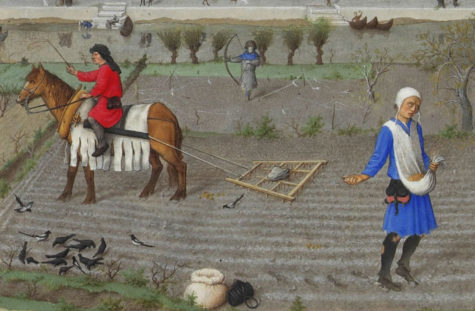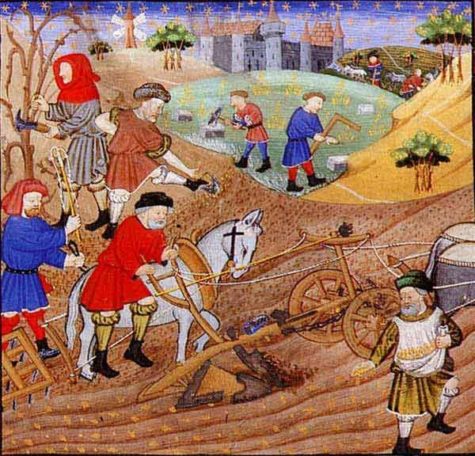February
Februalia, Februa, and also Februatio, was the Roman festival of ritual purification, later incorporated into Lupercalia. The festival, which is basically one of Spring washing or cleaning (associated also with the raininess of this time of year) is old, and possibly of Sabine origin. According to Ovid, Februare as a Latin word which refers to means of purification (particularly with washing or water) derives from an earlier Etruscan word referring to purging.
The Roman month Februarius (“of Februa,” whence the English February) is named for the Februa/Februatio festival, which occurred on the 15th day of the Roman month. A later Roman god Februus personified both the month and also purification, and is named for them. Thus, the month is named for the festival and not for the god.
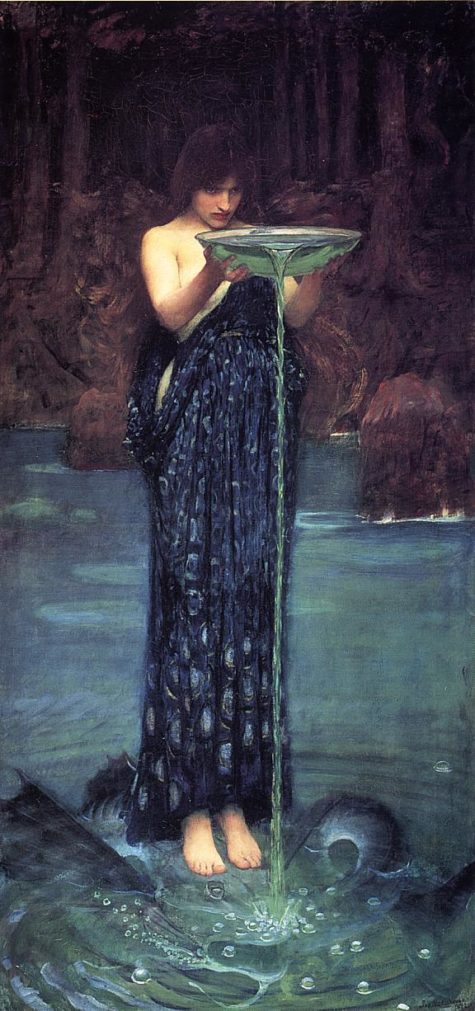
Here is a ritual for Februata, and is appropriate any day during the month of February:
- Color: White
- Element: Earth
- Altar: Spread with a clean white cloth and place thereupon four white candles and a bowl of water, very simply.
- Offerings: Clean something externally, and at the same time clean something internally.
- Daily Meal: Fasting for the day. Drink plenty of water.
Februata Invocation
The winter has lain heavily upon us,
Juno Februata, Queen of the new light,
And we are sunk in layers of thought
Like a hibernating mole
Beneath layers of earth.
Bring us forth into the light, Lady!
Let us remove all filth
From our bodies and our souls,
Making them a place of clarity.
Chant:
Februus Februus Lucina Lucina
(There is no further ritual; all silently take cleaning tools and being to thoroughly clean the entire building, ending with a ritual bath. As each cleans, they should meditate on what part of the mind or spirit needs cleansing, and let the physical cleansing aid in the spiritual aspect.)
Sources: Wikipedia and Pagan Book of Hours
Kalevala Day is celebrated in Finland on 28 February, to match Elias Lönnrot’s first version of The Kalevala in 1835. It is an official flag-raising day in Finland, and simultaneously the Day of Finnish culture. The epic poem, Kalevala is celebrated by the Finns with parades and readings from the poem.
- Themes: Creativity; Tradition; Fertility; Beginnings
- Symbols: Egg; East Wind: Poetry
- Presiding Goddess: Luonnotar
About Luonnotar:
A Finno-Ugric creatrix, Luonnotar closes the month of February with an abundance of creative, fertile energy. Her name means “daughter of earth,” and according to legend she nurtured the cosmic eggs from which the sun, moon, and stars developed. In the Kalevala, Luonnotar is metaphorically represented as the refreshing east wind – the wind of beginnings. She also created the first bard, Vainamolen.
To Do Today:
The Kalevala is the epic poem of more than twenty thousand verses that recounts the history and lore of the Finnish people. Luonnotar appears in the creation stanzas, empowering the entire ballad with her energy. If there’s anything in your life that needs an inventive approach or ingenious nudge, stand in an easterly wind today and let Luonnotar’s power restore your personal muse. If the wind doesn’t cooperate, stand instead in the breeze created by a fan facing west.
To generate fertility or internalize a little extra resourcefulness as a coping mechanism in any area of your life, make eggs part of a meal today. Cook them sunny side up for a “sunny” disposition, over easy to motivate easy transitions, or hard boiled to strengthen your backbone!
Another way to celebrate the day would be with a reading from the Kalevala, some of which can be found at Widdershins – just search the tag: Kalevala. There is also a nice Finnish Healing Spell adapted from the Kalevala on Book of Shadows
From: 365 Goddess
Maslyanitsa means butter in Russian, and it is also the name of the festival that says goodbye to winter and welcomes summer. From Moscow to St. Petersberg, Russians celebrate Butter Week just before their Lent fast days. The dates vary falling sometime in February or March. (In 2018, this festival begins on Feb 12).
During Lent, meat, fish, dairy products and eggs are forbidden. Furthermore, Lent also excludes parties, secular music, dancing and other distractions from the spiritual life. Thus, Maslenitsa represents the last chance to partake of dairy products and those social activities that are not appropriate during the more prayerful, sober and introspective Lenten season.
Monday is the high point of celebration, when people cook pancakes, or blini, served with honey, caviar, fresh cream and butter. The more butter there is, the hotter the sun is expected to be in the coming summer.
The most characteristic food of Maslenitsa is bliny (pancakes). Round and golden, they are made from the rich foods still allowed by the Orthodox tradition: butter, eggs and milk. Here’s an authentic traditional recipe: Classic Krasnye Blini.
Maslenitsa activities also include snowball fights, sledding, riding on swings and plenty of sleigh rides. In some regions, each day of Maslenitsa had its traditional activity: one day for sleigh-riding, another for the sons-in-law to visit their parents-in-law, another day for visiting the godparents, etc. The mascot of the celebration is usually a brightly dressed straw effigy of Lady Shrovetide, formerly known as Kostroma.
As the culmination of the celebration, on Sunday evening, Lady Maslenitsa is stripped of her finery and put to the flames of a bonfire. Any remaining blintzes (pancakes) are also thrown on the fire and Lady Maslenitsa’s ashes are buried in the snow “fertilize the crops”.
The last day of Butter Week is called “Forgiveness Sunday,” At Vespers on Sunday evening, all the people make a poklon (prostration) before one another and ask forgiveness, and thus Great Lent begins in the spirit of reconciliation and Christian love. The day following Forgiveness Sunday is called Clean Monday, because everyone has confessed their sins, asked forgiveness, and begun Great Lent with a clean slate.
Found at: Wikipedia
Gobnait is Irish for Abigail which means “Brings Joy”. As the patron saint of beekeepers, her name also has been anglicized as Deborah, meaning “Honey Bee.” This Irish saint is a version of the deity Domna, patroness of sacred stones and cairns. The center of her worship was at Ballybourney, Co. Cork, Ireland.
Her feast day, February 11 is called “Pattern Day” in the parishes of Dún Chaoin and in Baile Bhúirne, and is regarded as both holiday and holy day. In one tradition, a medieval wooden carving of Gobnait, about two feet high, kept in a church drawer during the year, is brought out. Parishioners bring a ribbon to ”measure” the statue. This ribbon is then taken home to use when special blessings are needed.
Daeboreum (literally “Great Full Moon”) is a Korean holiday that celebrates the first full moon of the new year of the lunar Korean calendar which is the Korean version of the First Full Moon Festival. This holiday is accompanied by many traditions. The 2017 date is February 11, in 2018 the date is March 2.
Many customs and games are traditional on this day, which is also sometimes called the Great Fifteenth. The Fifteenth, or Full Moon Day, marks the end of the New Year season in Korea and is regarded as the final opportunity to ensure good luck for the coming year.
It is considered lucky on this day for people to routinely repeat their actions nine times—particularly children, who compete with each other to see how many “lucky nines” they can achieve before the day is over.
It is common to celebrate the Great Fifteenth with kite flying and kite fighting, which is done by covering the strings with glass dust and then crossing them so that they rub together as they fly. The string held by the more skillfully manipulated kite eventually cuts through the string of the less successful kite, sending it crashing to the ground.
Another popular sport on this day is the tug-of-war. In some areas, an entire town or county is divided into two opposing teams. It is widely believed that the winners will bring in a plentiful crop and will be protected from disease in the coming year.
One familiar custom is to crack nuts with one’s teeth. It is believed that this practice will help keep one’s teeth healthy for the year.
In the countryside, people climb mountains, braving cold weather, trying to catch the first rise of the moon. It is said that the first person to see the moon rise will have good luck all year or a wish will be granted.
People play the traditional game named Jwibulnori (쥐불놀이) the night before Daeboreum. They burn the dry grass on ridges between rice fields while children whirl around cans full of holes, through which charcoal fire blaze. These cans fertilize the fields and get rid of harmful worms that destroy the new crops.
For breakfast, a five-“grain” rice consisting of rice, millet, Indian millet, beans, and red beans is served (gok includes grains and beans). This is eaten with various dried herbs. One of the special foods of Daeboreum is Yaksik (약식 / 藥食). This treat is made of glutinous rice, chestnuts, pinenuts, honey, sauce, and sesame oil.
Also there is wine drinking for Daeboreum. It called ‘Ear-quickening wine (귀밝이술)’. This alcohol means that if someone drank this alcohol, he or she would be quick to hear and hear good news for one year.
On this day, Koreans traditionally do not give any food to dogs since it is believed that dogs that eat on this day will contract gad flies and become ill during the coming summer.
Sources: Wikipedia and Answers.com
The Fornacalia, a festival in honor of Fornax, the goddess of furnaces, was held in order that bread might be properly baked, and to bless the ovens used to dry grain. This festival was movable, and could have been held any time between Febuary 5th to February 17th.
Each year the Curio Maximus (a citizen charged with ensuring the observance of curial religious feasts) would announce the date of the Fornacalia and post a separate notice for each curia (neighborhood) in the Forum, probably indicating where each curia should gather for the final part of the celebration.
It is believed that every family in the curia brought far, that is, spelt (a kind of grain), to be toasted in the meeting hall and sacrificed to ensure that bread in the household ovens wouldn’t be burnt in the coming year. Then the curiae assembled for a collective feast.
If on the last day of the Fornacalia (17th of February) anyone had missed the feast or was not a member of a curia (or had forgotten which one he belonged to), he could make a private sacrifice at the general assembly of all the curiae called the Quirinalia. It is believed by some, that because of this the Romans called the Quirinalia the Stultorum feriae, the ‘Feast of Fools.’
To Do Today:
The Fornacalia was a festival of ovens, in which Fornax was invoked by baking wheat breads and other grain-related foods. So think about dusting off your cookbooks, especially any recipes from your family, and start baking! Even people pressed for time can usually make a bath of bread from frozen dough.
If you only own a microwave, have no fear – microwaveable soft-dough pretzels are readily available in the freezer section of your supermarket. Or, simpler still, have toast for breakfast this morning to internalize Fornax’s warm emotions. On the other hand, if you’d like to give Fornax a much needed break from her toils at your place, go out and eat! Just make sure to have some bread as part of your meal to welcome Fornax to your feast.
Finally, take any dried bread you have and crumble it up for the birds. Focus on your desire for love and closeness in your life. The birds will convey your wishes to Fornax, the heavens, and the four corners of creation.
A Ritual For Today
- Color: Brown
- Element: Fire
- Offerings: Give some of the loaves of bread to those who have need of it.
- Daily Meal: Everything baked – breads, cakes, pies, casseroles.
This ritual should be performed in the kitchen, with the altar built on top of the stove or inside the oven. Set a brown cloth with a red candle and many loaves of bread on wooden trays.
Invocation to Fornax
Goddess of the Oven
Lady of Fire Enclosed,
Sacred Baker of our food,
We all started as dough,
Raw and soft and unformed,
And we were patted into shape
By those who raised us,
Yet we could not bring ourselves
Fully grown to the table
Until we had endured
The hardening flame.
Be kind to us, Lady!
As we go through life
Let us not be scorched
Or spared the fire
But bring us gently through
To be our final selves.
Chant:
Baker of the Loaf of Earth
We endure your fire
(One of the loaves is broken and handed around and shared, some more are set aside to eat later, and then the rest are taken to some deserving place and donated.)
- Ritual from: Pagan Book of Hours.org
- Other information collected from various sources
In the Hari-Kuyo ceremony, Japanese women gather once a year on Febuary 8th at Shinto shrines or Buddhist temples to thank their worn out needles and pins for good service.
It is also a time to value the small, everyday objects of daily living and to wish for progress in one’s needle work. In what is known as the Festival of Broken Needles, women gather to offer a funeral-type service by laying the needles to rest in soft jelly cakes or tofu. This burial is meant to bring rest to the needles and wrap them with tenderness and gratitude. This practice reflects the animist belief that all beings and objects have a soul.
Another aspect of the ceremony is the consideration for “the value of small things.” The concept of Mottainai, or not being wasteful, is related to the usefulness of the needles. These small but important tools would give long, useful service throughout the year. They were not to be lost or wasted nor carelessly replaced.
Further to the idea of laying the needles to rest for good service is the idea that women have many secret sorrows in life. These sorrows are often passed to the needles during long hours of stitching and the needles are thought to take on the burden of some of these sorrows, thus taking them away with the stitching that they do. This “rest” is brought to the needles in appreciation for their faithful service.
Source: Stitchtress Stumbles
The seventh day of the Chinese New Year, traditionally known as Rénrì (人日, the common man’s birthday), is the day when everyone grows one year older. In some overseas Chinese communities in Southeast Asia, such as Malaysia and Singapore, it is also the day when tossed raw fish salad, yusheng, is eaten for continued wealth and prosperity.
This day is filled with omens about human fate. For example, any person or animal born on this day is considered doubly blessed and destined for prosperity. So, consider taking out a divination tool today and seeing what fate holds for you.
In Chinese mythology, Nüwa is the goddess who created the world. She created the animals on different days, and human beings on the seventh day after the creation of the world. The order of creation is as follows:
- First of zhengyue: Chicken
- Second of zhengyue: Dog
- Third of zhengyue: Boar
- Fourth of zhengyue: Sheep
- Fifth of zhengyue: Cow
- Sixth of zhengyue: Horse
- Seventh of zhengyue: Human.
Hence, Chinese tradition has set the first day of zhengyue as the “birthday” of the chicken, the second day of zhengyue as the “birthday” of the dog, etc. And the seventh day of zhengyue is viewed as the common “birthday” of all human beings.
To generate Nüwa’s luck or organizational skills in your life, make and carry a clay Nüwa charm. Get some modeling clay from a toy store (if possible, choose a color that suits your goal, like green for money). If you can’t get clay, bubblegum will work, too. Shape this into a symbol of your goal, saying:
From Nüwa blessings poured,
Luck and order be restored.
Renri is the day, when all common men are growing a year older and the day is celebrated with certain foods according to the origin of the people. The ingredients of the dishes have a symbolic meaning and they should enhance health.
To honour Nüwa’s creation of animals either vegetable dishes will be eaten or a raw fish and vegetable salad called yusheng. Yusheng literally means “raw fish” but since “fish (鱼)” is commonly conflated with its homophone “abundance (余)”, Yúshēng (鱼生) is interpreted as a homonym for Yúshēng (余升) meaning an increase in abundance. Therefore, yusheng is considered a symbol of abundance, prosperity and vigor.
Almost no Chinese celebrate on this day. Some people just eat potatoes with angel hair noodle. The long noodle stands for longevity. In the past, seven vegetables which can repel the evil spirits and sickness away were eaten. They are as follows:
- Celery, Shepherd’s Purse Spinach, Green Onion, Garlic, Mugwort and Colewort
Ancient Chinese had a tradition of wearing head ornaments called rensheng, which were made of ribbon or gold and represented humans. People also climbed mountains and composed poems. Emperors after the Tang dynasty granted ribbon rensheng to their subjects and held festivities with them. If there were good weather on Renri, it was considered that people will have a year of peace and prosperity.
Fireworks and huapao are lit, so Renri celebrates the “birthday” of fire as well.
Since the first days of zhengyue are considered “birthdays” of different animals, Chinese people avoid killing the animals on their respective birthdays and punishing prisoners on Renri.
Nowadays in zhengyue, Renri is celebrated as part of the Chinese New Year. Chinese people prepare lucky food in the new year, where the “seven vegetable soup,” “seven vegetable congee” and “jidi congee” are specially prepared for Renri. Malaysian and Singaporean Chinese use the “seven-colored raw fish” instead of the “seven vegetable soup”.
In Japan, Renri is called Jinjitsu. It is one of the five seasonal festivals. It is celebrated on January 7. It is also known as Nanakusa no sekku, “the feast of seven herbs”, from the custom of eating seven-herb kayu to ensure good health for the coming year.
The celebration of the feast in Japan was moved from the seventh day of the first lunar month to the seventh day of January during the Meiji period, when Japan adopted the Gregorian calendar.
Sources: 365 Goddess and wikipedia
- Time: Early to Mid-February, Normally Observed at First New Moon
- Focus: Disir, Goddesses and The Beginning of the Planting Season
- Overall: A time to honor the Disir (in a broad sense), Goddesses and those connected with the coming power of Spring – the Vanir, local land wights and Nerthus to name a few examples.
The Charming of the Plough, also referred to as Éowemeolc is the Anglo-Saxon early spring or pre-spring festival. It was clearly so early as to be more about seeing signs of spring than celebrating its arrival. The early date serves the purpose of doing the blessing before there is any danger of cultivation starting without it.
Charming of the Plow is a ceremony that marks the beginning of the planting season; when the first furrows are made in the fields. In the Old World that usually meant bonding with and asking for the blessing of Gods and Goddess, the local land spirits and perhaps anyone else who might help insure the crops are a success.
The Vanir, Nerthus and land wights are thus honored at this time for the coming Spring and to wish a healthy season for the crops. Farm tools are blessed and an offering of bread and mead/milk are traditionally given to the land wights upon the first furrows made into the earth. Even as a home gardener I like to do this each year.
Disting (Old Swedish: thing at the time of the sacrifice to the Disir~ which are female ancestral guardian spirits), is still modernly observed as an annual market in Upsalla, Sweden. Traditionally, it was a time when many would gather for the Thing of All Swedes, hold a great market and a special blot at the temple in Upsalla for the Disir.
Recorded as a regular feast only in Sweden, this blessing takes place in early or mid-February. The name means ‘Thing (assembly) of the Goddesses’. In Sweden, it was the first public moot/fair of the year; in Denmark, this is the time when the first furrows were ploughed in the field (an activity much hedged about with folk custom). This is a feast of new beginnings, at which the work of the year to come is blessed. this time, the Earth is prepared to have the seeds sown so that growth will take place in the land. Also, gifts may be given to the disir and elves at this time.
Dating The Blessing
Since the Icelandic months had become fixed, while the Anglo-Saxon months were fully lunar, it may not be possible to determine whether the blessing of the plow or earliest harbinger of spring festival was held at the same time in all Germanic areas—tied to the time of Yule—or whether it depended on local agricultural conditions, such as the beginning of lambing or the first partial thaw of the new year.
Whatever the traditional date for Blessing of the Plough, whether January or February, it would be in late winter or very early spring, well before an outsider might expect the first furrow to be cut.
These days we usually celebrate Éwemeolc/Blessing of the Plough on February 2—to coincide with the Celtic Imbolc, and because it is a cross quarter day, midway between Yule and Eostre/Ostara. This is the source of the American Groundhog Day celebration, because the spring equinox is 6 weeks away.
About the Name:
The Anglo-Saxon name refers to ewes (female sheep) giving milk because they have birthed their lambs. The Anglo-Saxons got much of their milk from sheep. This holy day has several names and several possible spellings. First and most obviously, “plough” is normally “plow” in the US. Other names include:
- Éowemeolc
- Éwemeolc
- Ewemeoluc
The second month of the Anglo-Saxon year, corresponding roughly to February was called Sólmónað. Bede writes: “Solmónaþ can be called the month of cakes, which [the Angles] offered to their gods during it.” However, no such word sol or sól is recorded in Anglo-Saxon, so some scholars think the month was actually named after the sun, but the sun is sunne in Anglo-Saxon.
So the other theory is that the month-name actually comes from sulh, “plough.” The cakes are presumed to have been offered by leaving them in the furrows; they may have been called “plough-cakes.”
This is one of the reasons modern Anglo-Saxon heathens celebrate Blessing of the Plough at this time. The other is that plows have clearly been blessed (or charmed) in England since at least Anglo-Saxon times.
About the Blessing:
This is a syncretistic charm—a melding of Christian and heathen elements—intended to cause a barren field to grow a good crop, or to reverse a spell that has been placed on the field. It also seems clear that blessing the plow and using it to cut the first furrow and then wetting it with a special milk mixture—which would presumably be ewe’s milk—relate as much to starting off any agricultural year in the best way possible as to reversing a curse.
The Field Blessing Charm:
Here is the remedy, how you can improve your fields if they do not want to grow well or when some harmful thing has been done to them by a wizard or poisonous sorcery. Take then at night, before dawn, four sods from four parts of the land and mark how they were before.
Take then oil and honey and yeast, and milk from each kind of livestock that may be on the land, and a piece of each kind of tree that may grow on the land, except for “hard trees”, and a piece of each plant / herb known by name except for glappan (burdock) alone, and then put holy water theron, and then drip it thrice on the base of the sods, and then speak these words:
Crescite, grow, and multiplicamini, and multiply,
et replete, and fill, terre, the earth.
In nomine patris et filii et spiritus sanctu sit benedicti.
And the Pater Noster as often as the other one. And after that, carry the sods to church, and a mass-priest should sing four masses over the sods, and one should turn the green side towards the altar, and afterwards one should take the sods to where they were previously, before the setting of the sun.
After this, four crosses are made from branches, inscribed with the evangelists names, and buried face-down in the pits from which the sods were taken.
When all that is done, then let someone take unknown seed from beggars and give them twice as much as he took from them, and let him gather all his plowing gear together; then bore a hole into the plow beam putting into it incense and fennel and hallowed salve and hallowed salt. Then take that seed, place it on the body of the plow, then say:
Erce, Erce, Erce, mother of the earth,
may the almighty grant you, the eternal lord,
fields growing and flourishing,
increasing and strengthening,
high shafts, bright fruits,
and the abundant barley-growth,
and the white wheat-growth,
and all growth of the earth
May the etrnal lord grant him,
and all his holy ones, who are in heaven,
that his produce may be defended against all enemies,
and that it be protected against all evils,
against poisonous sorceries sown over the land.
Now I ask that the ruler, he who shaped this orld,
that there may be no speaking-woman or a skilful man
who can turn to naught words thus spoken
Then let someone drive forth the plow and open the first furrow: then say:
May you be well, earth, mother of men!
May you grow in God’s embrace,
filled with food for use by men.
The original text of the charm may be found here: Metrical Charm For Unfruitful Land
Sources:
The Celtic calendar denotes February 4 as King Frost Day. This old English festival is designed to fight the boredom of winter with a celebration asking for a quick arrival of spring.
In London, a fair was held to honor King Frost Day. People would gather at the river Thames, which was completely frozen over, to petition the King of the Frost to bring on Spring. This annual celebration understandably came to an abrupt end during World War I. Along the Welsh border, some still celebrate this day by gathering snowdrops.
King Frost reigned with the Queen of the Snowflakes. Today is a good day to work Snow and Ice Magicks. You can also decorate your home and work spaces with representations of winter, icicles, and snowflakes.
If you’re in a cold climate, go ice skating, attend a hockey game, build a snowman, or go cross-country skiing—or sit inside by the fire with a cup of cocoa and watch the snow fall outside. If you’re in a warm climate, eat ice cream or build an ice sculpture and watch it melt. Take joy in the cold, clean attributes of King Frost.
Collected from various sources
